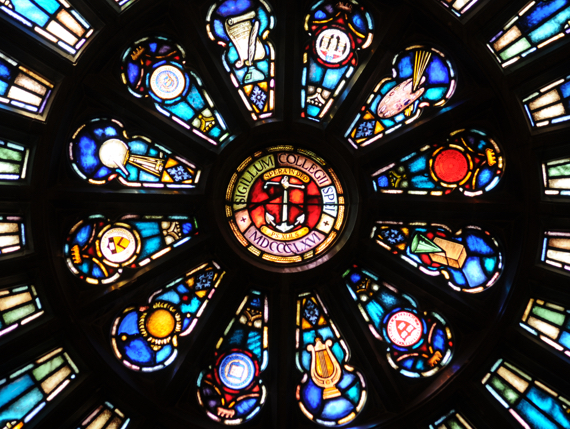


Their right-fit prospects are sharp, artistic, religiously diverse, and proudly unconventional. “At Hope, you can be a gay, punk-rock Episcopalian student majoring in dance and feel right at home,” as one mStoner colleague put it. Hope’s challenge was mirroring that authenticity in their print and digital collateral. They also needed a sophisticated roll out strategy and a better model of collaboration for the marketing and admissions departments.
Internally, Hope recently established a new Department of Public Affairs & Marketing under the leadership of Vice President Jennifer Fellinger. The department was determined to maximize the college’s communication channels and streamline collaboration with the admissions department around marketing. Hope also had a beautiful new website and needed to update its print and digital recruitment materials to match the site’s awe factor. mStoner, Inc. stepped on board to assist with both goals.
“We needed some guidance on communicating with prospective students and hitting the right rhythm, channels, and frequency,” Fellinger said. “We wanted someone to look at what we were doing and tell us whether we needed less or more.” mStoner began by auditing all of Hope’s existing pieces and decide what to remove, replace, or combine. Out of that process, a clear plan for developing new materials emerged.
Three key learnings influenced mStoner’s strategy:
The strategy, therefore, focused on the following:
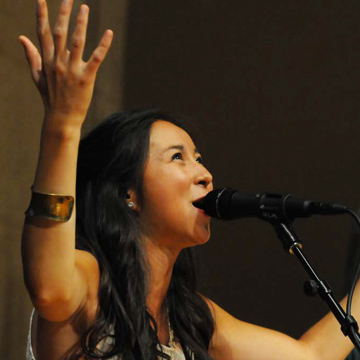
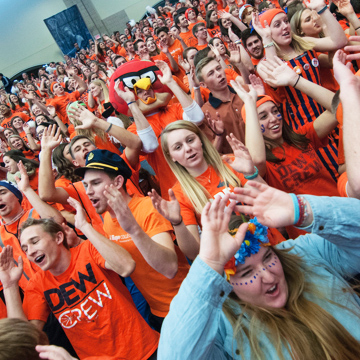
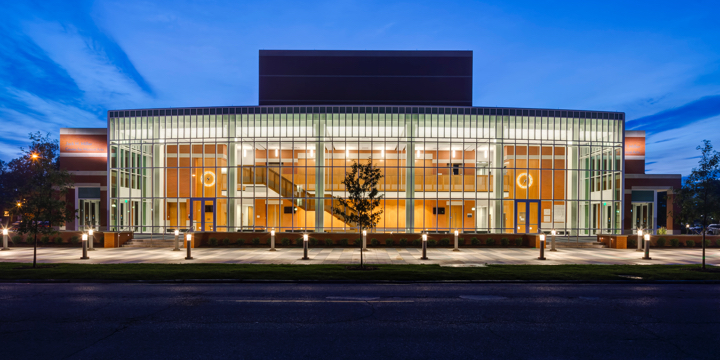
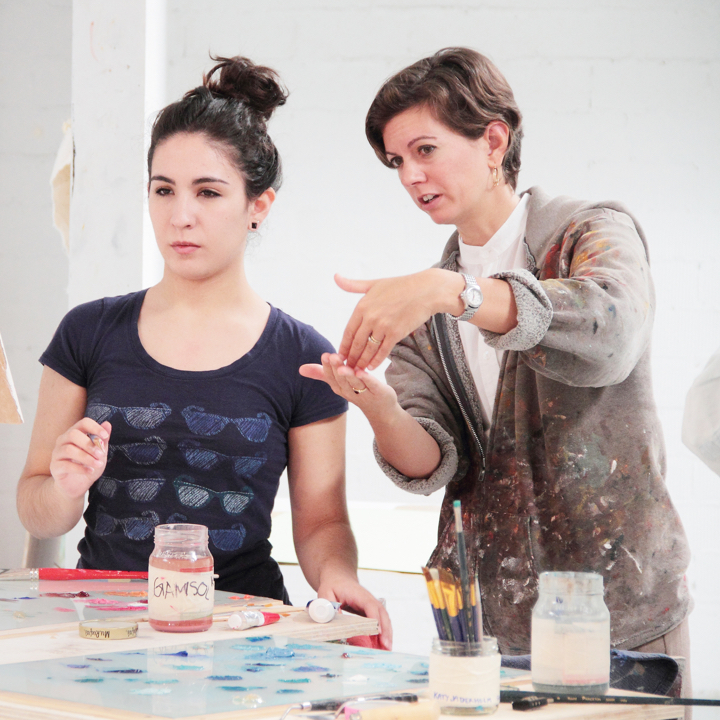
Above all, this single design direction needed to resonate with the highly independent thinkers who are Hope’s prospective students. mStoner’s creative leads collaborated with the college’s talented in-house designers to arrive at an authentic, texturized, imperfect aesthetic that also conveyed sophistication and quality. mStoner and Hope then adapted this over-arching design concept to each printed and digital piece in the suite.
“Young people recognize quality and can also sniff out bullsh*t,” mStoner visual designer Ben Conley said. “The paper has to be good, the design has to be good, and you have to get to another level of creativity to give them a sense of the place and the feel of it.” The design concept accomplishes this with hand-drawn typography and illustration in visually rich layouts that employ a large color palette.
What makes the pieces especially personal, however, are the sketches Conley drew on his visit to Hope: a rendering of the oldest building on campus, the gateway arch that everyone recognizes, the oak and maple leaves that cover the quad lawn, and athletes wearing Hope uniforms.
“The viewbook needed a personality and a point-of-view. It may not resonate with everyone, but certainly the new collateral better matches the Hope experience —intense, yet fun and welcoming,” said Ben Bilow, creative director, mStoner, Inc.
Young people recognize quality and can also sniff out bullsh*t. The paper has to be good, the design has to be good, and you have to get to another level of creativity to give them a sense of the place and the feel of it.
The final strategy, design, and deliverables constitute a complete system that Hope can replicate and build on year after year.
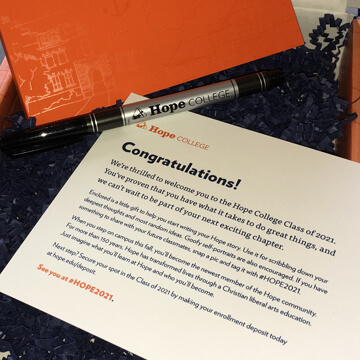
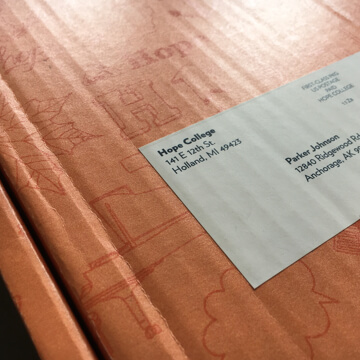
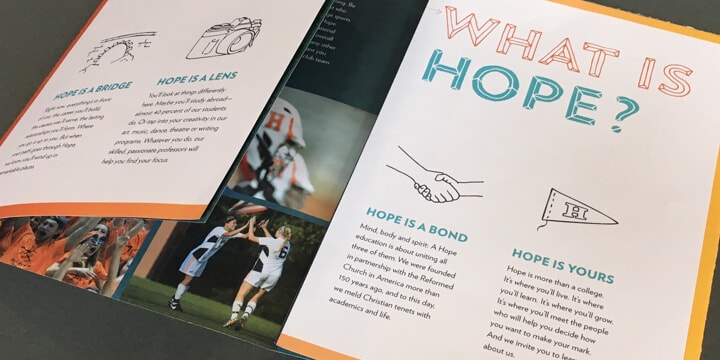
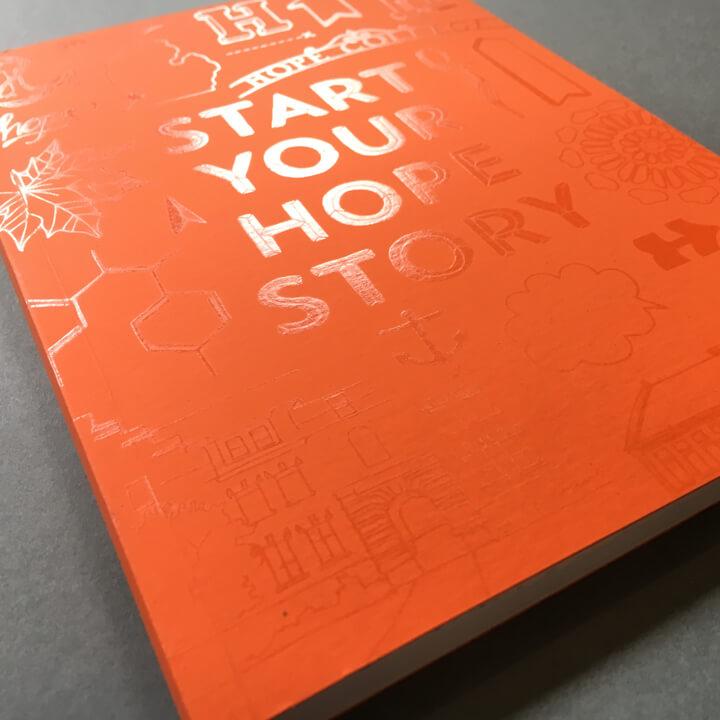
The acceptance gift box is one of the project’s most creative pieces, both in strategy and design. Students find out they have been admitted to Hope when they receive this box, which includes a folder entailing their personal financial aid award; a custom, Moleskine-esque journal; and a Hope College pen. The journal is wrapped in a belly band with the student’s name printed on it and the entire package comes in a gift box featuring Hope’s colors.
Fellinger knew from the beginning that she wanted to do something special for the financial aid award letter, which outlines how much aid the student will receive. “They’re going to compare their aid package to wherever else they’re thinking about going, so it’s a SUPER important piece. Usually, these letters come on college letterhead and look really cluttered with lots of information crammed onto a single 8.5 x 11 sheet. We decided to make ours function as a marketing piece because it’s an opportune moment to remind an admitted student what a great value Hope is. The folder talks as much about outcomes and placement rates as it does their financial aid package.”
“It was more expensive, obviously,” Fellinger added, “but we were all on board internally with needing to redo the award letter. mStoner took that request and really turned it into something beautiful, something high-impact.”
— Jennifer Fellinger, vice president, public affairs & marketing, Hope College
Hope College and mStoner were honored with a 2017 UCDA Design Award of Excellence for the suite of integrated admissions materials.
A full admissions cycle with the new materials has yet to take place, but there is early evidence of success. Admitted students posted unboxing videos and images on social media when they received the acceptance gift. And Fellinger reports that Hope staff members are “swooning” over the viewbook, even stopping her in the grocery store to tell her how much they love the piece.
The collaboration with mStoner has also affected the operations of the Department of Public Affairs & Marketing. Fellinger reports that her staff and the admissions department are working better together. This is no small feat considering the new department was just beginning to merge creative services, admissions marketing, and the website all together at the project outset.
“Our weekly joint marketing meeting with admissions used to be somewhat of a pain point but now it’s my favorite meeting of the week,” Fellinger said. “Ideas and creativity are really flowing and we’ve become more strategic — even in things that mStoner was not specifically involved in. I’m confident we would not have gotten there without going through mStoner’s process. They’ve walked alongside of us and made us more functional. We went from a place of low trust to high trust, from low energy to high energy and high inspiration.”
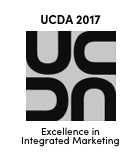
Communications strategy, asset review, editorial calendar, creative direction, print design, email template design, video production, presentation template, and social media strategy.
Next case study